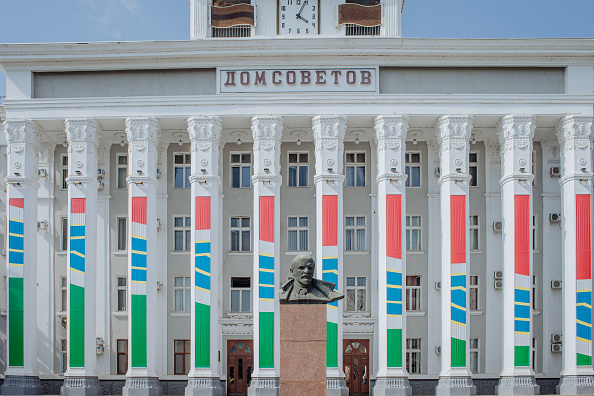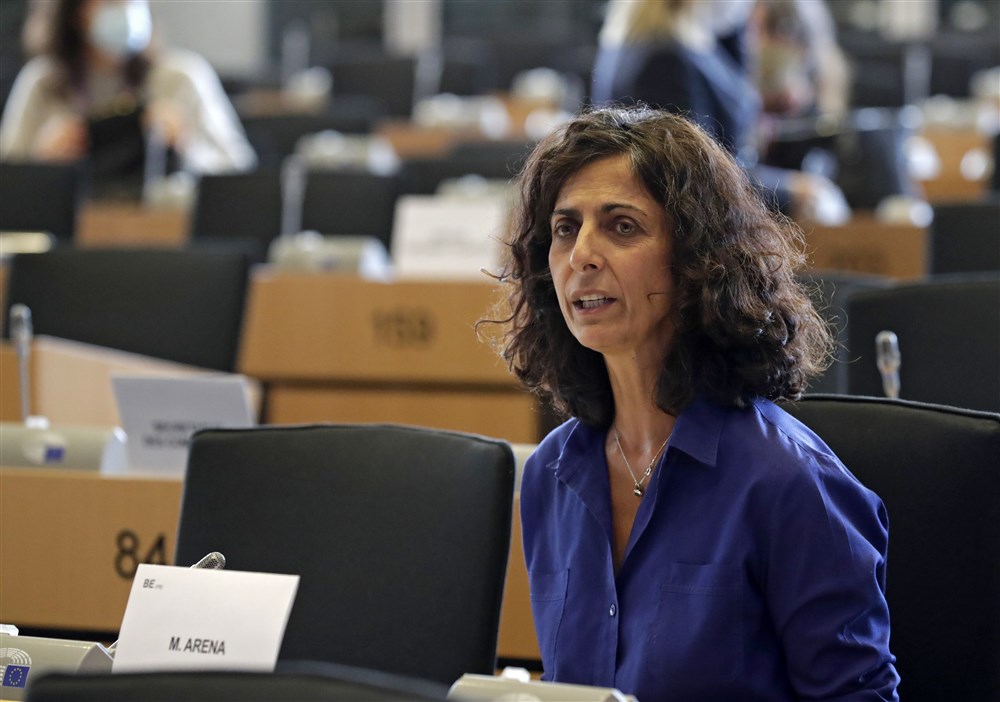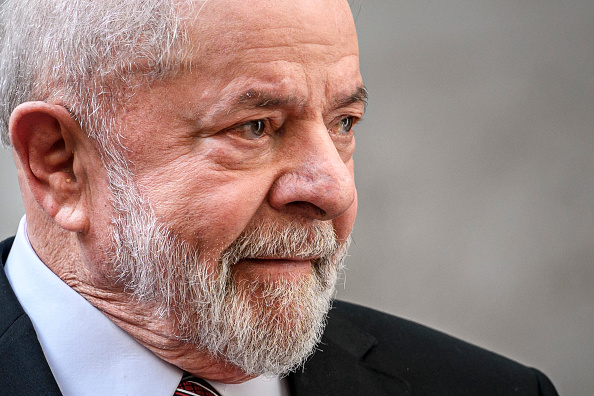That NATO has reached its 75th anniversary this week should be a cause for genuine celebration across the West and by all free and open societies around the world.
It is indisputable that the Alliance kept the peace during the Cold War, providing the shield behind which Europe could recover from the ravages of World War Two – and which the Warsaw Pact, despite all its military might, dared not attack.
NATO’s performance in the decades-long political-military competition with the Soviets also created the conditions for the bankruptcy and overthrow of Communism in Europe. It gave a chance to liberty and democracy to rise again behind the Iron Curtain, from East Berlin all the way to Kyiv – and even Moscow itself, at least for a while.
The door was opened to unbelievable leaps in prosperity the world over once the USSR collapsed, geostrategic pressures relaxed, and global free trade took off in the 20 or so years after the fall of the Berlin Wall.
Today when “globalisation”, “neoliberalism” and “free market economics” have almost become hate-words even for large sections of the political Right, we tend to forget the wealth and power brought to us – and propagated internationally, even to China – by that great victory of Capitalism over Communism.
What our leaders decided to do with that victory and historic opportunity is another matter – and much lamented. But the point is that it was NATO’s military protection that enabled that victory in the first place.
What didn’t happen is even more important than everything that did occur in the years after 1989.
In a very fundamental sense, the Alliance’s greatest achievement is simply in having prevented war with the Soviets. Today we take this for granted; it seems it couldn’t really have been otherwise.
People rarely appreciate or even dwell on what could have easily happened. But in this case we should: then, as now, a thermonuclear war with Moscow – inevitable once any large-scale shooting starts – would have been the end of civilisation on this planet. It wasn’t just Europe’s or America’s fate that hung in the balance.
That we are still here is because NATO deterrence worked. And it worked because, apart from the resources of a (broadly) well-run and confident West, there was clarity of purpose and consensus on what the Alliance was about.
Its mission, very simply, was to defend its member states under the Article 5 guarantee, for which the adequate observance of Article 3 – on being properly prepared militarily – was likewise required and indeed met. The disciplined stewardship of a multinational organisation by serious leaders taking their job seriously saw the Alliance through the 40-year stand-off with the Soviets.
But these standards have long now been in abeyance, in line with the general devolution of the quality of Western political leadership and strategic understanding. Article 3 has been trampled underfoot in the last 35 years by most European allies who have let their armed forces shrink and their defence-industrial bases, atrophy.
Not even Putin’s first bite at Ukraine, in 2014, changed anything fundamentally by way of European military preparedness for war; there’s been a bit more defence spending, but nothing on the scale required.
Another symptom of slipping standards has been the progressive dilution of NATO’s hardcore military purpose, focused on a geographically-defined area, into a more diffuse and general goal of supporting the spread of democracy in various places.
Allied membership was put on offer to pretty much any “democracy” in the wider European region that wished to join “the club” – certainly not for anything they might contribute militarily or geo-strategically in terms of strengthening NATO. Hence the odd inclusion of countries like Croatia, Montenegro or Albania.
This was done as a matter of political and not defence calculation – even though the first duty of the Alliance, above anything else, is to increase the security of its existing members.
Seen purely from a military-strategic cost/benefit standpoint, even the accession of the Baltic states – welcome though it might have been in moral-historical terms – brought little advantage and only created a defence conundrum – epitomised by the Suwalki Gap – that NATO did not have before.
Furthermore, in some cases like that of Ukraine itself in 2008, promises of future membership came with even more obvious strategic risks that would make NATO less, not more safe. Again, considerations of politics and morality (even ideology) intervened, and perhaps they were justified; but it is worth being clear about the risk voluntarily taken on by the Allies at that point.
All this is to say that NATO’s size, which is often seen as a strength of the Alliance and a feature of its success, is not cost-free either in political or security terms.
With the increase in membership – and NATO now comprises of 32 countries – any organisation becomes more unwieldy management-wise, and in this case more open to risks of political mis-alignment in a crisis.
Concerns about how “coalitional politics” would play out in a real-world conflict crisis with the Soviets ran high even during the Cold War when NATO was a much smaller and leaner alliance of highly culturally-aligned Western European and North American countries; this issue, if anyone dared to confront it openly, would appear in even starker terms today.
It is an open question whether the Alliance can recover some of that old focus and standards mentioned above, or whether this drawn-out process of expansion – with the layers of complications, confusions and vulnerabilities that is has introduced – has made the return to that classic kind of Cold War-type strategic discipline virtually impossible.
The signs are certainly bad. They can be seen in the utterly foolish debate launched by president Macron around a possible Western military intervention in Ukraine, topped by the even more nonsensical claim that the war raging in that country is somehow “existential” for NATO countries.
The speed and scale at which this proposition was embraced by a large section of Europe’s foreign policy and defence community is a measure of just how far strategic understanding in NATO countries has become unmoored from reality and from what the Alliance should and should not properly do.
As a defensive Alliance, in both moral, legal and practical terms, NATO’s highest responsibility (i.e. backed up by the readiness to fight) is strictly to its own members – not to anyone else. Otherwise, what would distinguish a NATO member from a non-member country?
As Jens Stoltenberg correctly and firmly said from the start of Putin’s invasion on February 24 2022, “what we do is defensive” and NATO would “defend every inch” of its territory.
This is the only correct position to hold – which is the reason why the quasi-interventionist position taken by Macron and his acolytes is nothing but a way to undermine NATO directly. Partly it comes from a misunderstanding of how such an “intervention” would play out (a corrective can be found in these pages).
But another source of this idea of possible NATO boots on Ukrainian soil is the conceptual drift experienced by the Alliance in recent decades, as described above.
The distinction between membership and non-membership of NATO has arguably become increasingly blurred in many people’s minds. This can be seen in the way that many “experts” now wave aside the meaning of the NATO border when they casually argue that Putin would simply march on westwards if he subdues Ukraine – as if there is no difference between the Russians campaigning in Ukraine and on NATO territory, and no value in NATO’s deterrence.
This is simply the mirror-imaging of the fact that the boundaries of NATO’s responsibility under its Charter have been reinterpreted in moral terms and extended well beyond its legal frontiers. The same people that breezily suggest a NATO action in Ukraine also promote – just as breezily – the idea of a post-Ukraine Russian attack on the Alliance.
It is time to return some rigour to these debates and to go back to the basics of the Alliance, which are about its own defence.
This does not mean in any way “abandoning” Ukraine – on the contrary. As this column has repeatedly said, Kyiv must be backed to the hilt with money and weapons. As long as Ukraine wants to fight, NATO countries must supply its war effort as best as possible – not least because the brave Ukrainians have proven they are more than a match for the enemy if properly armed.
But there have to be limits to what NATO can and should do: not any new limits, but simply a clear re-affirmation of the principles enshrined in its Charter and which sustained the Alliance throughout the Cold War. The most important and basic one is that there can be no circumstance in which NATO should engage in combat beyond its borders unless its own territory is attacked first.
This is why the recent talk in various European quarters about the value of “strategic ambiguity” in terms of what the West might decide to do in Ukraine is completely erroneous.
The opposite is true: we need clarity in regards to the Alliance’s limits, not ambiguity – because, again, this is ultimately Ukraine’s war, not NATO’s.
If there had been no NATO, individual European countries should certainly be free to be as ambiguous as they want because they would really have total sovereign freedom over how they decided to get involved in the war – and bear the consequences. But because NATO is an alliance with rules, its allies’ military policy on Ukraine must be ultimately subordinated to NATO’s collective decision – because their actions can drag the rest of the alliance into war.
No amount of moral sympathy for Ukraine’s tragic plight can change the fact that NATO’s first responsibility is towards the defence of its own members.
As I have argued, Kyiv must be backed as much as possible – and much more can be done if European politicians, not to mention the US Congress, find the will to act with the necessary dispatch. But this effort must also be balanced against the requirement for NATO to urgently boost its own defences along its Eastern Flank, particularly on the more vulnerable Romanian border.
Irrespective of what happens in Ukraine, the NATO frontier must become an impenetrable steel wall, a heavily fortified defensive belt bristling with large quantities of artillery, air defence systems, armoured formations and, in the rear, with powerful air force units and robust logistical chains – all backed by a revitalised and expanded European defence industrial base.
NATO has lived with the Red Army stationed across no-man’s-land from it before, on the inner German border, and successfully deterred any attacks.
It can be done now as well; there is no inherent reason to panic in advance at the theoretical prospect of Russian troops in Odessa or the lower Danube and rush into some ill-judged “preemptive” action. And the best way to avoid this future altogether is to arm Ukraine now.
Talk about fighting in Ukraine, and other variations thereof, can ultimately be only a distraction from the principal mission of restoring NATO deterrence at Cold War levels. This level of effort requires major sacrifices from our societies, at considerable political cost. If there ever was a time for strong, cold-eyed, old-school Western leadership on defence, this is it.






Europe’s capital needs media to challenge the status quo: That’s why Brussels Signal is launching